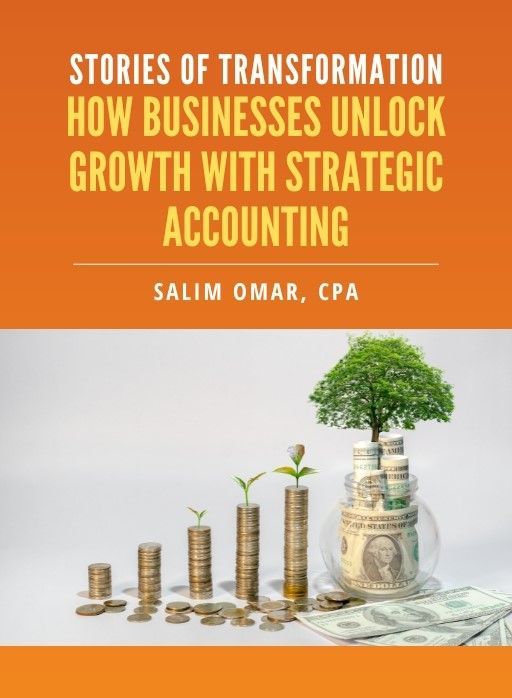Seizing Last-Minute Tax Strategies Before the Books Close
There’s still time to turn year-end pressure into
financial advantage. The aim isn’t to pile on tasks—it’s to focus on a handful of high-value actions that safeguard cash, lower audit exposure, and lock down a clean close. This streamlined playbook shows you how to finish strong in the final days.
Buy Back Control With a 10-Day Close Sprint (2025 year-end close)
When the clock is ticking, structure beats effort. Stand up a short, defined sprint that locks the books cleanly and creates space for
tax strategy.
Think of this sprint like a mini-hackathon for your finance team—fast, focused, and with a clear finish line.
What to expect
A simple daily rhythm anchored by three working docs:
- Variance tracker
- Open‑items list with clear owners and due dates
- Close checklist with a firm freeze date
Outcome
- Fewer late adjustments, faster approvals, and a stable trial balance that tax can map without rework.
Year-End Cash Wins You Can Still Capture (year-end tax planning)
Small timing choices create real cash impact. Use these levers if they align with policy and substance:
- Accelerate deductions already in motion: Prepay ordinary, necessary expenses within policy limits (rent, insurance, SaaS) where it’s customary and consistent.
- True-up accruals for bonuses, commissions, and vendor liabilities that meet “all events” recognition tests and are paid on schedule.
- Optimize revenue timing without games: Scrub cutoffs so shipped/not-billed and billed/not-shipped items are correct. Tighten contract terms going forward to reduce ambiguous timing next year.
- Capital vs. expense with intent: Apply capitalization policies consistently; don’t force an expense if capitalization is required.
Translation: This is basically about “don’t leave money on the table.” Capture deductions you already earned, don’t invent new ones.
Tax Credits and Elections Worth the Eleventh-Hour Effort
If you’re close but not complete, a focused push can lock meaningful value:
- R&D credit substantiation: Finalize qualified activities, wage/contractor mapping, and narratives.
- State pass-through entity (PTE) tax: Evaluate whether an entity-level election reduces owner-level SALT exposure.
- Accounting method clean-ups: Identify obvious method changes that improve timing and reduce noise.
- Fixed asset review: Reconcile the roll-forward, tag disposals, and align Section 179 positions with lender covenants.
Think of these credits like end-of-season sales—worth grabbing if they fit, but not worth chaos if the timing isn’t right.
Reduce Notices Before They Start
A handful of controls dramatically cut notice risk and post-filing churn:
- Trial balance freeze: Lock TB before tax mapping; any change requires a documented adjustment.
- Return-to-books map: Tie every major return line to a specific workpaper.
- Memo high-judgment areas: Revenue recognition, capitalization thresholds, credits—one page each with rationale.
- State alignment: Confirm which states require separate extensions or unique e-file rules.
Translation: These steps are like proofreading your books before handing them to the IRS—fewer surprises later.
Extension as a Precision Tool
(business tax extension)
If material items remain open—late K-1s, unresolved audits, pending method decisions—use an extension deliberately.
What to expect: A conservative extension payment based on YTD performance plus cushion; a clear plan to finalize credits/elections with audit-ready support.
Outcome: Penalty protection, cleaner documentation, and more accurate filings—without turning the extra time into another fire drill.
Translation: Extensions aren’t procrastination—they’re a safety net that keeps you penalty-free while buying time for complex items.
Execution Lines: Act Now vs. Park for Extension
Act now (fast ROI, low risk)
- Close sprint and TB freeze
- Cutoff scrub and accrual true‑ups
- Fixed asset roll‑forward and disposals
- R&D credit evidence you already have
- State payment calendars and estimates
Park for extension (complex, needs modeling)
- Method changes with cash impacts
- Multi‑state apportionment/nexus disputes
- Complex credit packages not yet substantiated
- High‑judgment revenue policies that require cross‑functional approvals
Keep the Team Fresh While You Push
Year‑end is a performance sport. Protect energy and accuracy.
- Short daily standups with a clear owner for each open item.
- No new projects—freeze scope; finish what’s started.
- Reserve a 2‑hour “quiet block” for the finance/tax lead daily until books are frozen.
Think of it like athletes tapering before a big race—you want sharp execution, not exhaustion.
Bottom Line
In the final days before the books close, precision beats volume. Lock the trial balance, capture the cash wins that are already substantiated, document the high‑judgment areas, and use extensions as a strategic backstop when necessary. Done well, these moves keep money in the business, reduce future notices, and set up a smoother year ahead—without burning out the team.
Ready to convert the last days of the year into measurable savings?
Book a 20‑minute Close Sprint Setup—leave with a freeze checklist, payment plan, and a prioritized tax move list built for your numbers.
Free eBook:
Stories of Transformation


Salim is a straight-talking CPA with 30+ years of entrepreneurial and accounting experience. His professional background includes experience as a former Chief Financial Officer and, for the last twenty-five years, as a serial 7-Figure entrepreneur.





